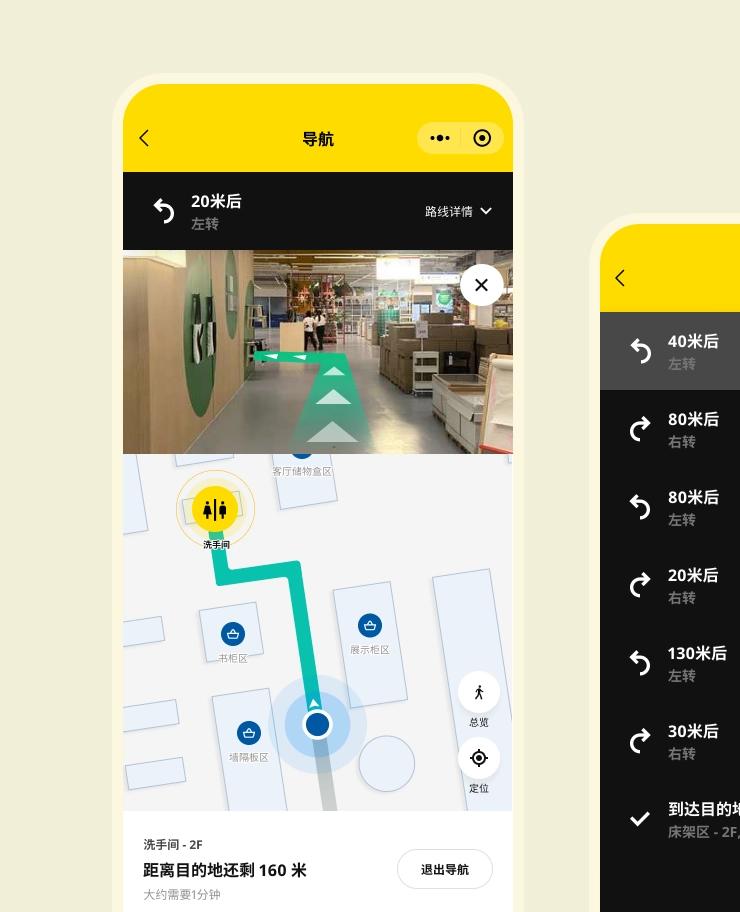Top 10 User-Centric HMI Designs: How China Is Leading The Way
January 23rd, 2024 · Written by Samuel Jesse
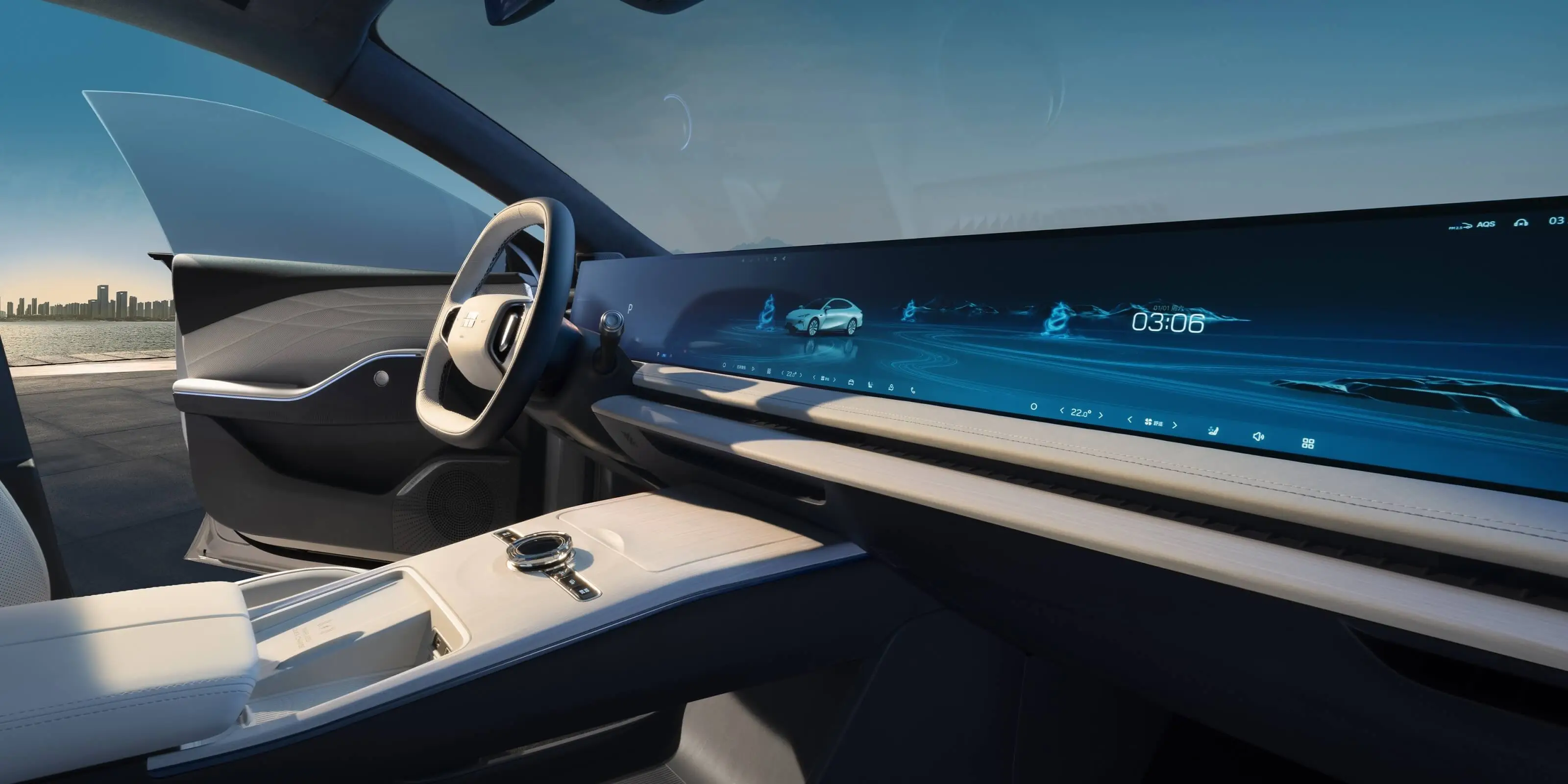
Contents
When it comes to radical transformation in the in-car human experience, Chinese automotive brands are leading the way. Modern human-machine interfaces (HMI) offered by innovative Chinese companies have evolved from traditional analog gauges to immersive digital cockpits, leveraging the latest technologies for enhanced comfort, safety, and entertainment.
Chinese automakers envision futuristic HMI features, including intelligent AI assistants that chat conversationally, expansive augmented reality heads-up displays projecting navigation guides right onto the road ahead, and fully customizable matrix lighting that sets the mood ambiance throughout the vehicle interior.
Advanced entertainment and connectivity features allow rear passengers to enjoy theater-quality entertainment and collaborative social features for group road trips. With everything from haptic touch surfaces and hand gesture controls to facial recognition that personalizes preferences and settings for every unique driver and passenger, emerging HMI advances from Chinese brands promise driving experiences once only envisioned in science fiction.
In this article, we will explore the most exciting current and future trends in automotive interface tech that put enjoyment, safety, and human-centered design above all else - focusing on Chinese automakers leading the way.
Here are the key trends reshaping automotive HMI in 2024.
Looking to craft the HMI of the future?
We blend technical expertise with human-centered design for unparalleled in-vehicle experiences.
1. Enhanced Navigation Systems
Modern navigation systems go far beyond traditional GPS to provide an integrated and enhanced navigation experience. Advanced mapping displays, predictive route planning, live traffic updates, and AI-powered smart navigation place Chinese brands at the forefront in this area.
Specific navigation features found in next-gen Chinese vehicles include high-precision 3D mapping, augmented reality enhancement of actual driving views with overlayed directional prompts, and machine learning for personalized route recommendations based on driving habits over time. Voice-activated navigation allows drivers to set destinations, change routes, and interact conversationally for a hands-free experience.
Specifically, Xpeng's advanced driver assistance system (ADAS), called X NGP, offers a navigation-guided pilot for self-navigating selected Chinese cities. Using deep neural networks like XNet 2.0 and planning systems like XPlanner, X NGP can navigate complex city environments, including traffic signals and obstacles. This City NGP program is expanding across China with the goal of full vehicle autonomy.
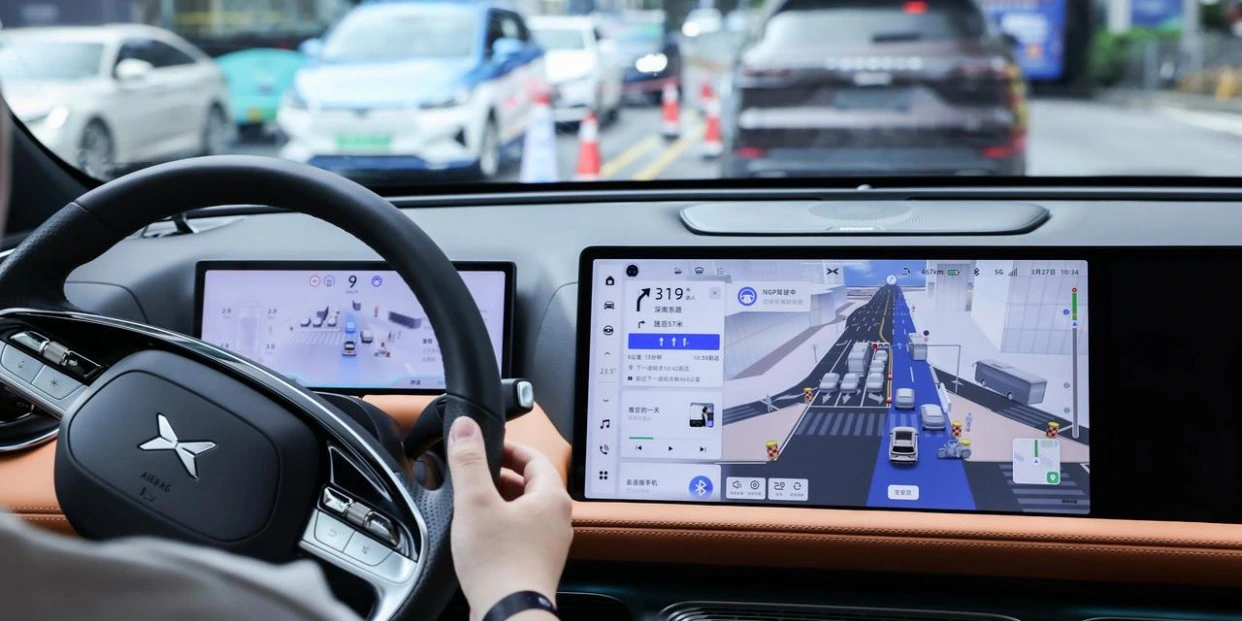
XPeng G9 sophisticated navigation system
Nio's NOMI predictive navigation system learns driver behavior and can automatically set destinations while giving ETAs enhanced by machine learning algorithms. HiPhi vehicle navigation leverages facial and speech recognition for individualized navigation settings between family members and friends.
As mapping and positional technologies rapidly advance, navigation visualizations will become more immersive and dynamic. Realistic 3D previews with hazard warnings, off-road trail guides, and various customizable views will transform static navigation into an essential part of the driving experience.
Models like Rising Auto's R7 sedan and AITO's M9 SUV are integrating HUAWEI's extended head-up display (XHUD) system to enable augmented reality navigation overlays projected directly onto the windshield, meeting drivers' needs for both function and entertainment. Intuitive AR overlays leveraging technology like XHUD will make following route guidance as easy as following visual cues already on the road. Rising Auto R7 and AITO M9 are good examples of vehicles incorporating XHUD and other augmented reality HUD solutions to enhance navigation visuals.
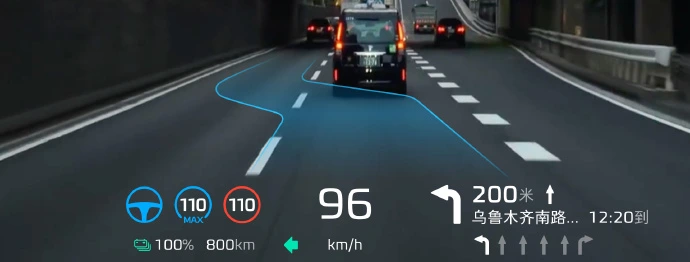
Rising Auto R7 advanced navigation visualization
As technology advances, AR overlays will become more vivid and detailed - transforming roads into living maps guiding drivers to their destinations.
2. 3D Visualizations
Advanced 3D visualization features revolutionize automotive HMIs by providing interactive digital representations of controls, vehicle interiors, and exteriors. Using 3D rendering, drivers can visualize operating environments to optimize the driving experience.
The Lotus Eletre hyper-SUV showcases 3D visualizations through its "Visible Charge" system, which uses augmented reality to map energy flow outside the vehicle via 3D lighting. Drivers and passengers can visually interact with charging sequences.
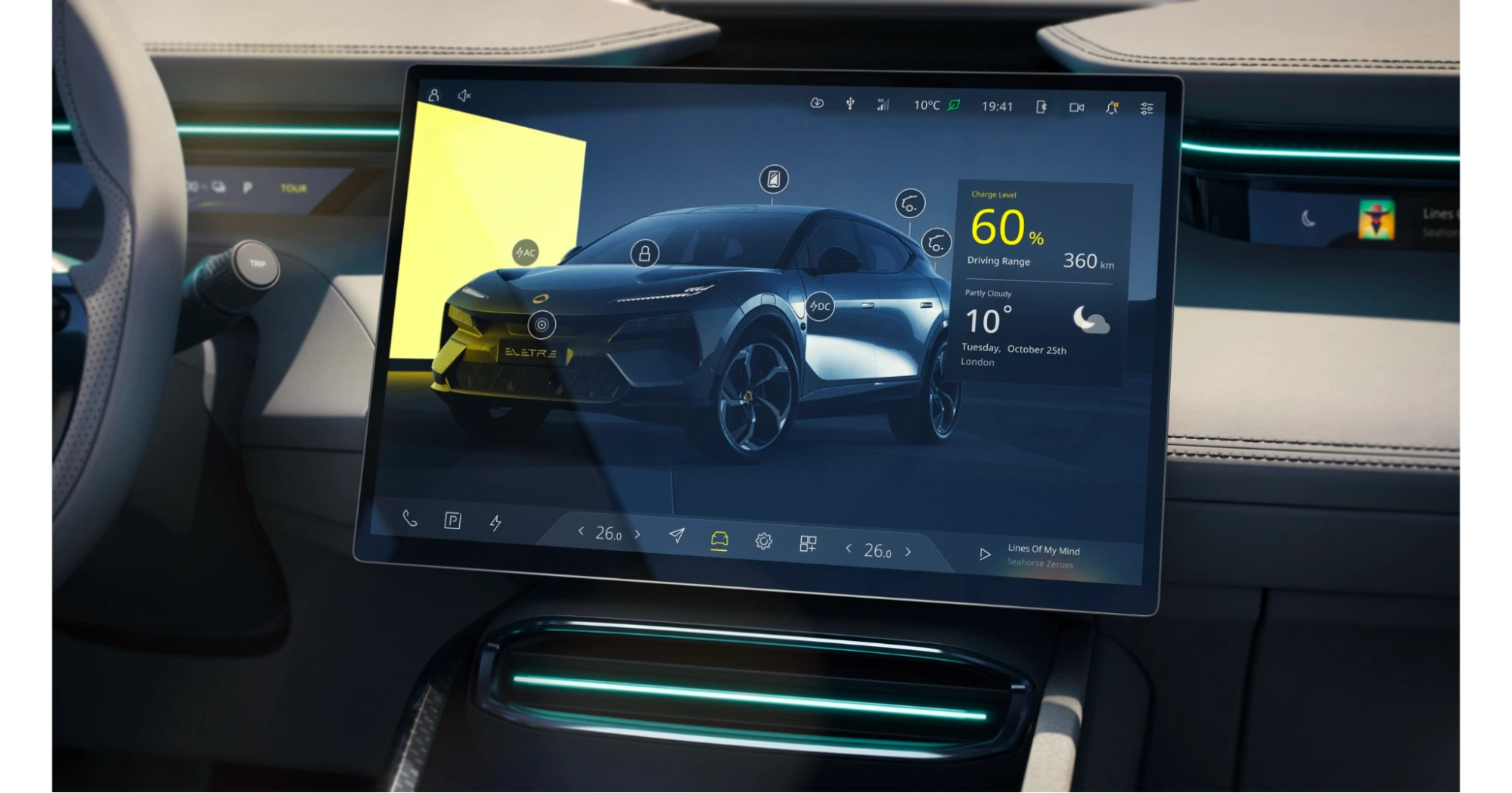
These 3D innovations from luxury Chinese electric vehicle makers demonstrate the future of immersive in-car visuals. Gesture recognition may soon allow drivers to manipulate 3D dashboard components with hand motions as easily as a smartphone. With Chinese automakers leading in adoption, 3D promises to transform not just entertainment but core driving visuals.
3. Advanced Voice Controls and AI Assistance
Intelligent voice control systems that allow hands-free vehicle operation through conversational AI and natural language understanding are progressing rapidly in Chinese autos. Voice is becoming a primary interface for in-car HMIs.
Nio's NOMI assistant platform features an animated voice assistant that can accept natural speech commands to control music, navigation, climate, and more while displaying visual responses on the AI companion screen. NOMI also provides witty, conversational reactions - for example, when asked, "What do you eat?" NOMI replies, "Keep me charged, and that's all I need!"
The XPeng G9 SUV implements a 3D infrared binocular gaze recognition system with voice control for seamless authentication and response. Commands for navigation, media playlists, and even widget layouts can be activated hands-free.
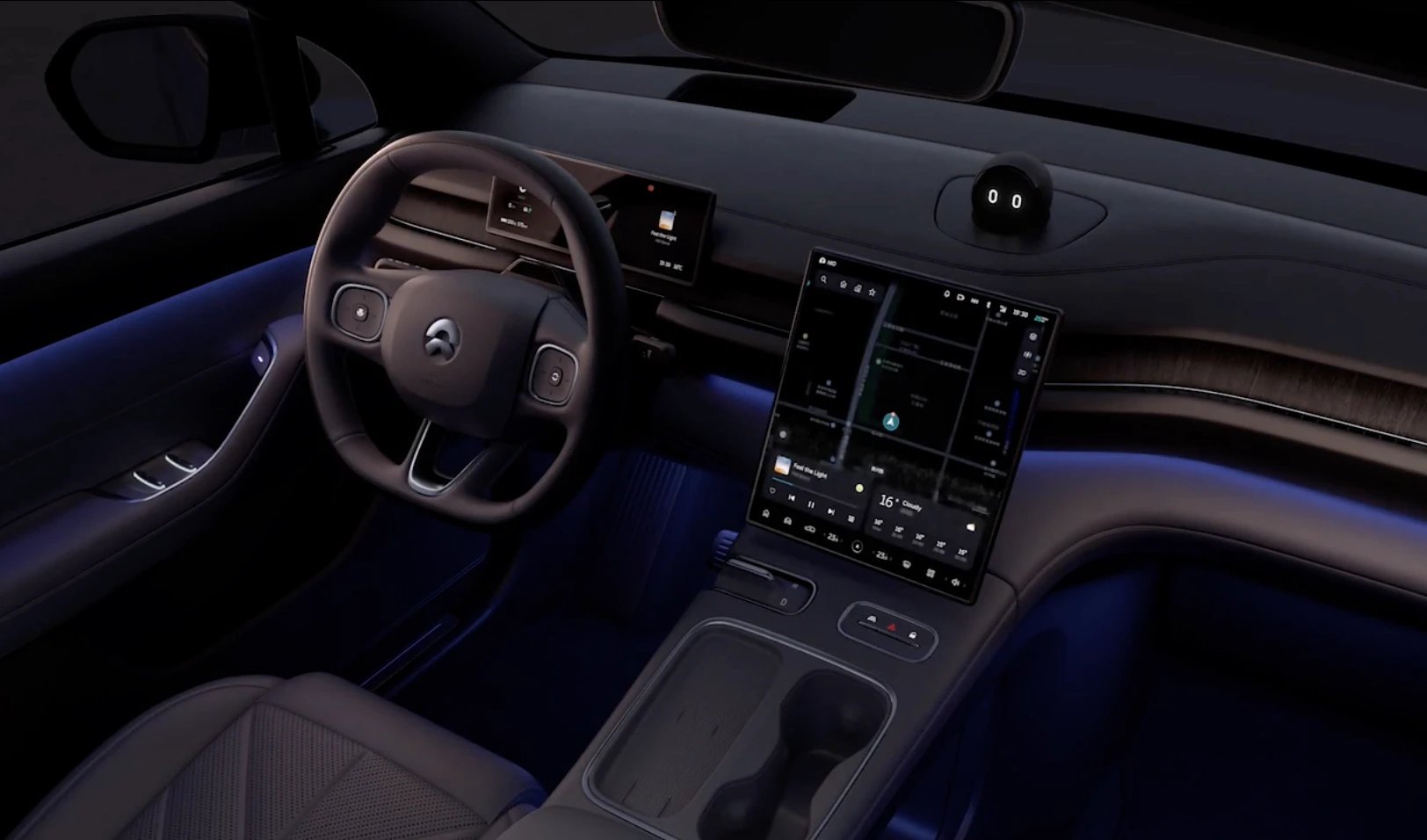
Nio EC6 interior
4. Passenger Comfort and Entertainment
In tomorrow's cars, passengers will be immersed in a next-generation digital playground that keeps them entertained for the whole journey. And this in-car entertainment revolution is coming from China faster than anywhere else.
When it comes to passenger comfort and entertainment, models like Li Auto's L9 SUV stand out. Featuring amenities like a large second-row entertainment screen, tray tables, adjustable leg supports, reclining "queen's seats," and built-in coolers/warmers, the L9 spoils passengers with both physical and digital amenities.
Chinese consumers have come to expect sleek, high-tech interiors that rival the latest smartphones. For designers, this appetite for innovation pushes boundaries and creates opportunities that don't exist in other markets. Features considered novelties elsewhere are seen as necessities in China's competitive auto landscape.
The vehicle interior is the new frontier for high-tech entertainment for Chinese automakers. Their connected ecosystems blur the line between smartphones and automobiles, evolving cars into mobile cinemas and gaming hubs on wheels. As more models follow the L9's lead on passenger experience, riding in tomorrow's Chinese-branded vehicles will feel like first-class airline travel.
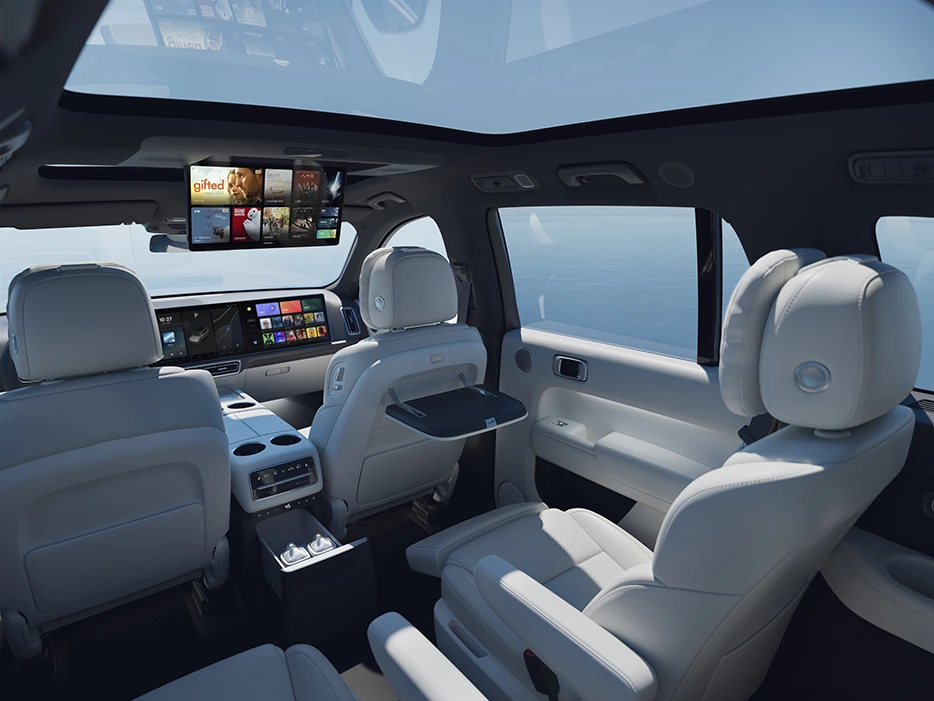
Li L9 infotainment and comfort features
Nio, Tesla, and XPeng provide next-level entertainment options. We're talking surround-sound speaker systems delivering concert-hall audio; multiplayer games operated through steering wheel controls, and karaoke microphone accessories for carpool singing sessions.
Advanced features also optimize the experience for passengers. The XPeng G9 SUV provides great second-row comfort and a vanity mirror screen on the sun visor, allowing rear passengers to video chat, apply makeup with perfect lighting, and snap selfies.
Other models sync with mobile apps so occupants can stream music, social feeds, and videos from their devices. The Denza van puts VR goggles and multiplayer screens at every seat so the entire cabin can access its own entertainment portals while in transit.
This drive to create mobile theaters, gaming dens, and content hubs on four wheels shows that ambitious Chinese brands aim to make time spent in vehicles more play than pure transport. For global automakers, keeping pace with ultra-modern Chinese infotainment pushes HMI possibilities further than ever.
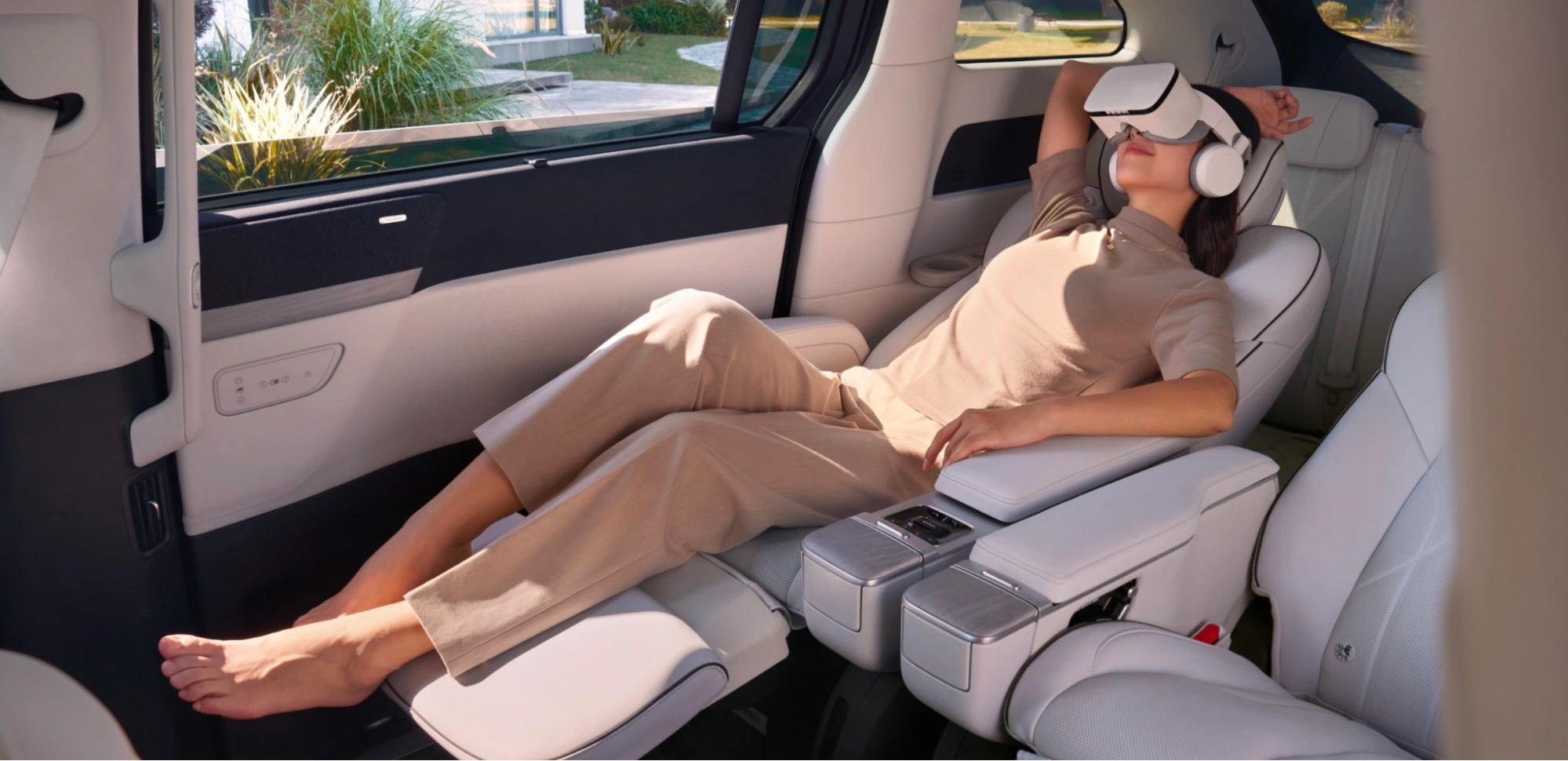
XPeng X9 second-row comfort and entertainment features
5. In-car Ambiance
Ambiance has become a major selling point and battleground for innovation as riders spend more time commuting. Leading Chinese electric vehicle (EV) brands have HMI features that turn basic transportation into a captivating, multi-sensory escape.
From dims-to-dawn mood lighting to rotating widescreen displays and customizable sounds and scents, driving China’s newest EVs feels more like relaxing in a lounge than navigating through traffic.
Ambient interior lighting has become incredibly avant-garde. Elaborate custom themes let passengers bathe cabins in their choice of colors and effects. Riders can set the mood for relaxation, romance, and excitement - even sync light shows to their music.
China’s hot EV startups like Nio and Xpeng boast ultra-wide digital dashboards with crisp visuals worthy of an IMAX theater. Their spacious, wraparound cockpits provide an airy, open environment that reduces driver stress. And displays can be switched from tasks like navigation to kicked-back entertainment on demand.
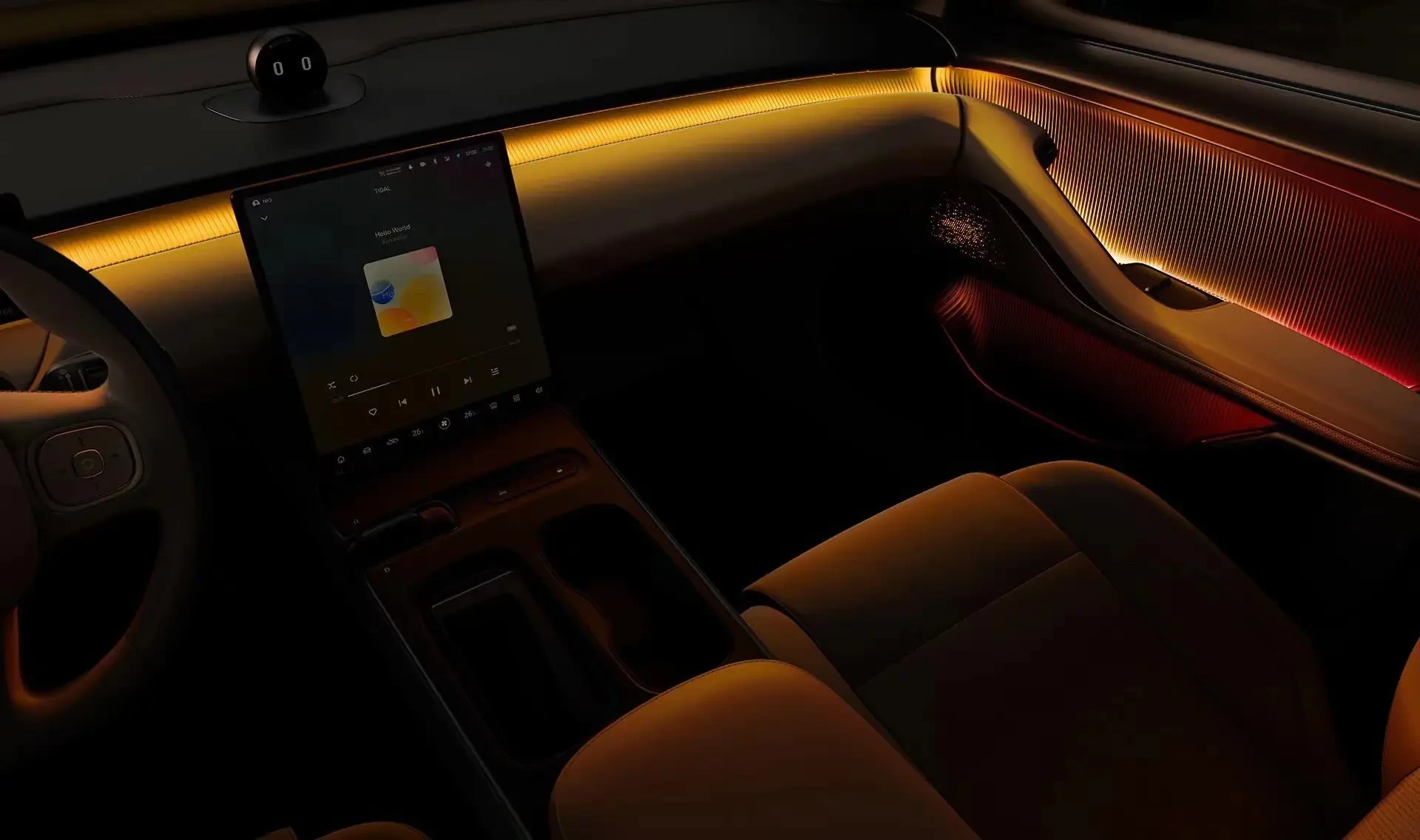
Nio ET5 in-car lighting ambiance
Even scents are getting an upgrade. Concept vehicles incorporate aroma diffusers that fill the cabin with subtle yet pleasing fragrances tailored to passengers’ preferences. Some even sync complementary scents to navigation destinations.
While China currently leads this sensory revolution, demand for immersive interiors is accelerating globally as autonomous driving evolves. Western brands would do well to examine trends in the East.
6. Mobile Car Connectivity
When it comes to in-car tech, Chinese consumers expect seamless integration with their always-connected digital lifestyles. For automotive HMI designers targeting this market, mobile connectivity is key.
Brands like Huawei are launching slick in-car smart screens that mirror user phone apps onto the vehicle display. Suddenly, that morning commute becomes an extension of your mobile experience, letting you cue up a playlist or get turn-by-turn directions through your favorite maps app.
Other companies embed mobility-centric "light apps" that tap the power of the cloud to deliver pertinent, streamlined functionality for driving contexts. With Tencent's WeScenario platform, parking apps materialize when you pull up to your destination or gas finders pop up when running low. The apps come to you precisely when you need them.
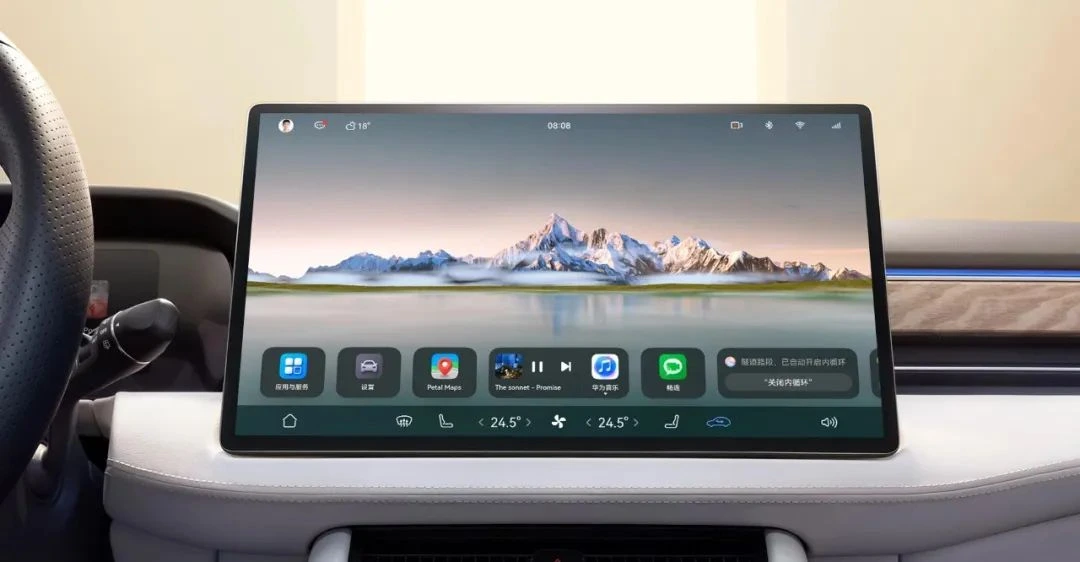
AITO M7 mobile connectivity capabilities
And since WeChatis like oxygen for connected Chinese consumers, automakers are customizing it for in-vehicle use. Brands like Leading Ideal let drivers tap into China's ubiquitous super app through voice commands or steering wheel shortcuts. Now, you can dictate hands-free messages and access integral WeChat features without taking your eyes off the road.
By building intuitive bridges between mobile ecosystems and the in-car experience, Chinese automotive HMI pushes the boundaries of seamless connectivity. Expect continuous innovation in this space as designers worldwide keep pace with consumer tech demands, including the moving vehicle.
7. Creative Exterior Lighting
Exterior lighting serves functional needs like visibility and signaling intent to other drivers. But in automotive HMI, creative light opens new communication and personal expression possibilities.
China's HiPhi X full-size smart SUV points to the future with its Multi-Dimensional Intelligent Signal Display (ISD) matrix lighting. The ISD lights on the exterior can display customizable images and animations for the driver and surrounding public.
Other creative light shows might visually interact with pedestrians as you drive by or project zebra stripes onto the roadway at night to enhance a crosswalk.
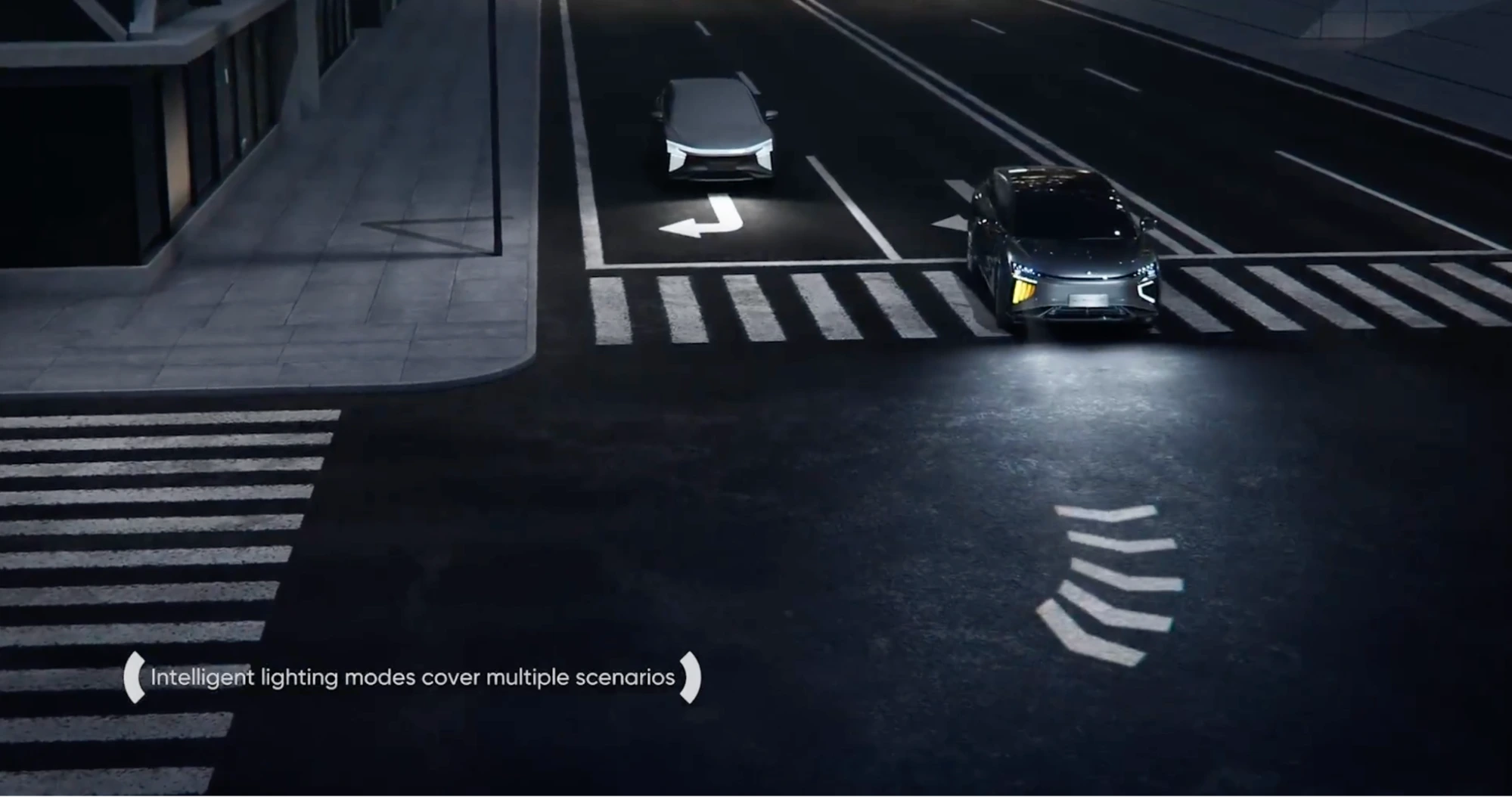
The HiPhi X concept also includes steering wheel controls that allow drivers to honk different audio clips, ranging from cute greetings to vocal warnings. Just tap the horn icon to admonish jaywalkers with a friendly "excuse me!" or politely remind a slow vehicle that the light is green.
With the power to broadcast signals, images, and even audio from the exterior, the HiPhi X reimagines a vehicle's external lights as an interactive communication platform. As HMI advances unlock new ways to connect with the world outside the car, exterior lighting design will become increasingly inventive and personalized. Chinese automakers like HiPhi lead the charge.
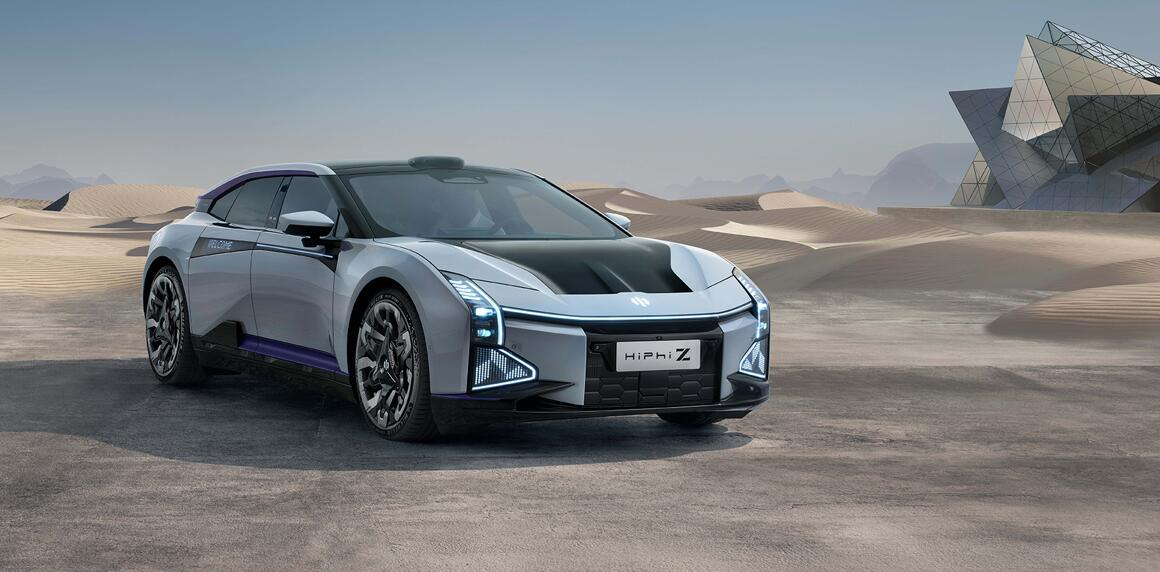
HiPhi Z exterior lighting
8. Charging
Electric vehicles have special HMI considerations, especially regarding power levels and charging needs. Drivers rely on displays and alerts to monitor battery range, find stations, and keep charging sessions on track.
Innovative Chinese EVs are optimizing the charging experience through creative HMI updates. For example, the HiPhi X full-size smart SUV features vivid light arrays that provide at-a-glance charging status. Color-coded displays notify the driver when charging starts, reaches mid-levels, nears completion, and fully tops off the battery.
Since charging often takes time, the vehicle also employs HMI to entertain. The HiPhi Z doors project customizable images with integrated speakers to play music videos, short films, and mini-games while drivers wait. The interactive door displays make charging more enjoyable.
During longer road trips, EVs must judiciously manage range by plotting routes with appropriate charging stops. Here again, advanced HMI assists drivers. BYD's Han EV allows users to adjust navigation routes easily, including customized charging waypoints based on charge levels and station wait times.
As sustainable mobility advances, clever HMI solutions will continue easing range anxiety and charging hassles for EV drivers. Automakers in China are most intent on perfecting HMI for power needs while making charging fun.
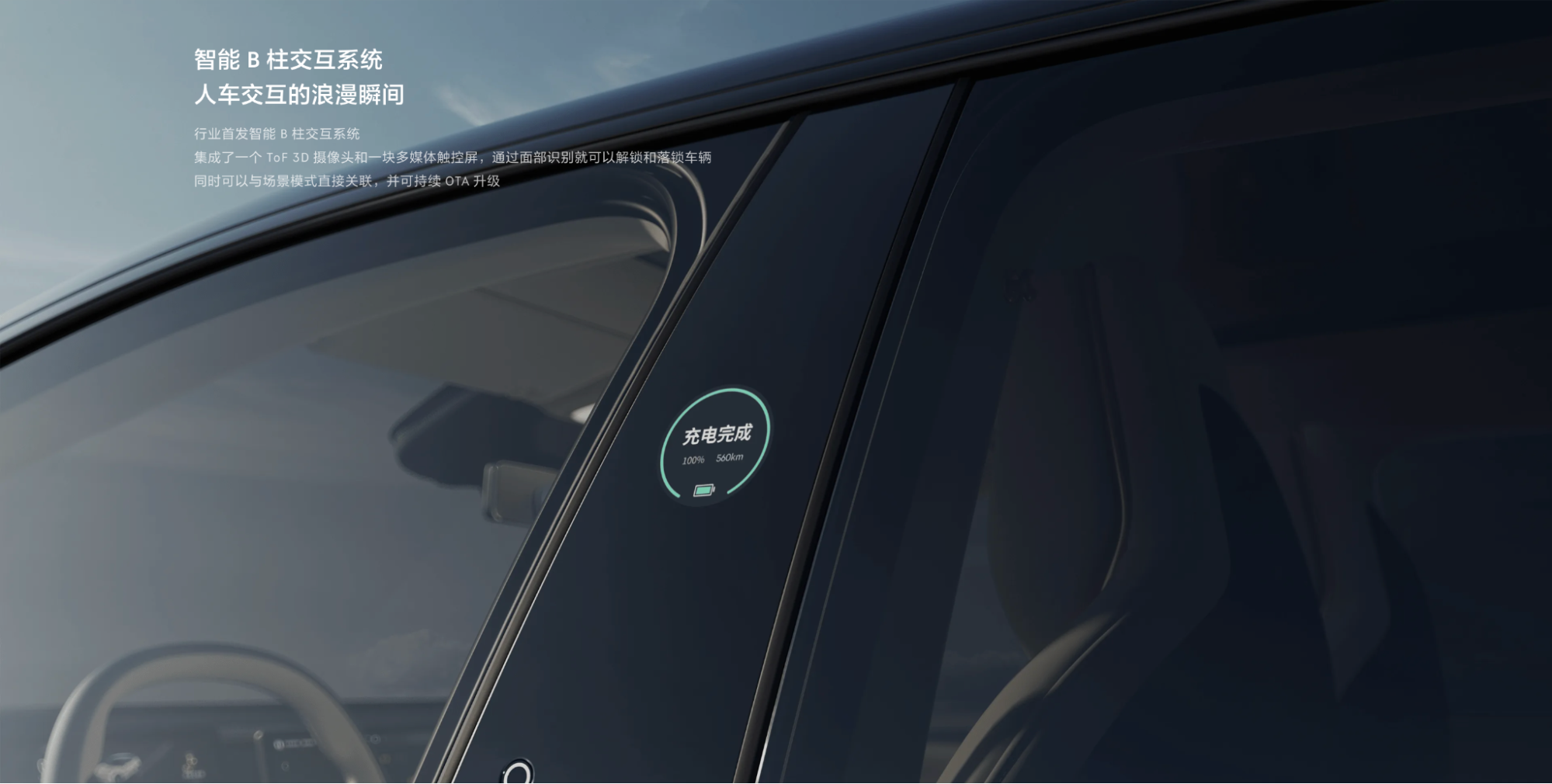
Zeekr X external battery charge display
9. Social Connectivity Features
Nio's ES7 and ES8 models are prime examples of how HMI can foster social interactions within the vehicle. The innovative features go beyond traditional infotainment systems, providing a platform for passengers to seamlessly connect, communicate, and share experiences during group trips.
Imagine embarking on a road trip with friends or family, and the Nio ES7/8 becomes the hub for shared experiences. The HMI in these models facilitates group trip syncing, allowing passengers to coordinate plans, share points of interest, and even synchronize their entertainment preferences. This level of integration transforms the vehicle into a social space where everyone is engaged and connected.
NOMI not only learns individual driver behaviors but also considers the collective preferences of a group. This intelligence allows the system to automatically set destinations, provide enhanced estimated arrival times (ETAs) based on machine learning algorithms, and offer route recommendations that cater to the preferences of the entire group.
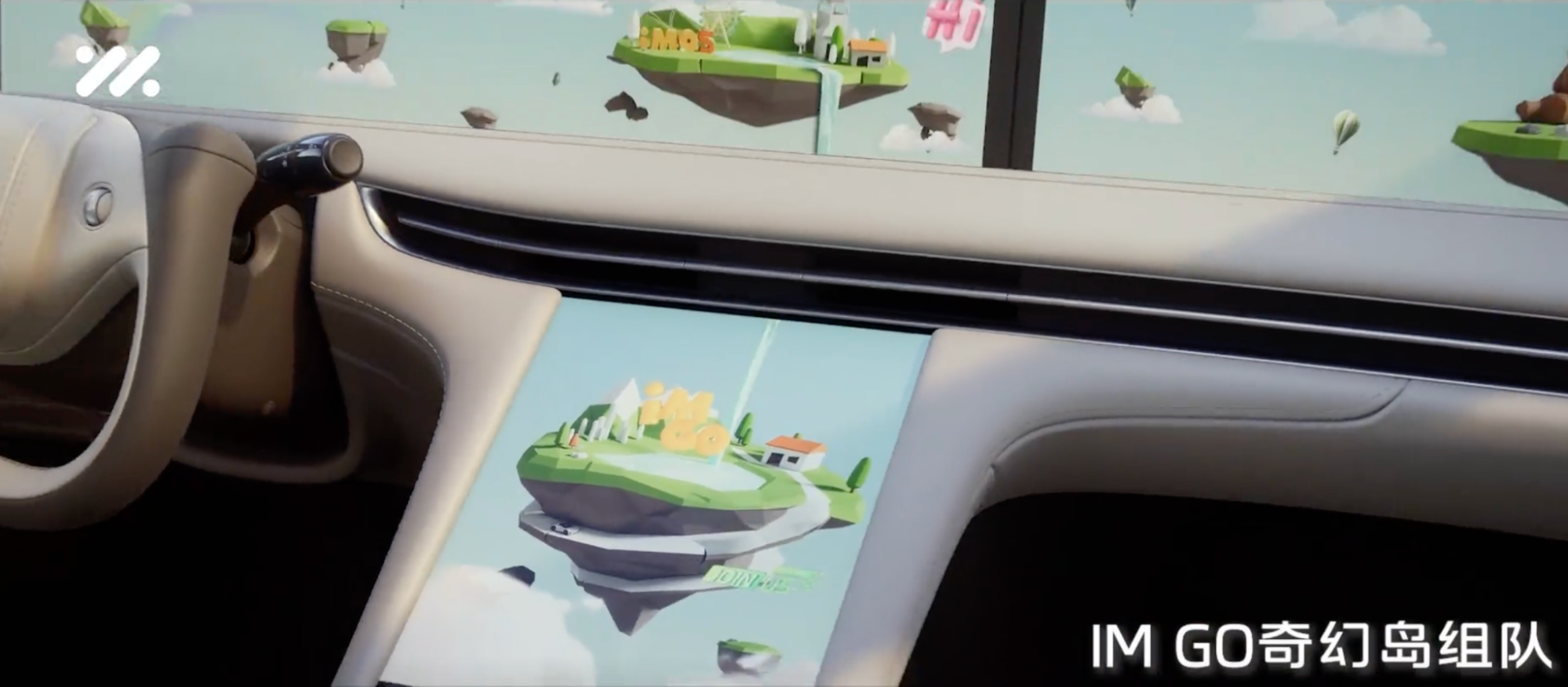
IM LS7
Facial and speech recognition features further enhance the social aspect of the journey. For instance, Nio's HiPhi vehicle navigation leverages these technologies to recognize individual family members and friends. The system then adjusts navigation settings, ambient lighting, and other preferences based on the recognized individuals, creating a personalized and welcoming atmosphere for each passenger.
Nio's commitment to passenger comfort extends to the entertainment realm. The HMI in the ES7/8 models supports collaborative entertainment experiences, turning the vehicle into a mobile entertainment hub. From cinema-style surround sound to multiplayer in-car gaming, passengers can enjoy a diverse range of activities, fostering a sense of camaraderie and shared enjoyment.
As we look ahead, the social integrations pioneered by Nio and other Chinese automakers will likely continue evolving. With advancements in connectivity, artificial intelligence, and collaborative technologies, the future of HMI holds even more promise for creating immersive and socially connected driving experiences.
10. Full-width Screens In The Cockpit
Among the standout trends, integrating full-width screens, spanning end-to-end or left-to-right, emerges as a transformative design element. Models like the SKYHOME concept car, the JIYUE 01, and the Geely Galaxy E8 exemplify how these expansive screens redefine the driver's interaction with the vehicle.
The SKYHOME's panoramic display stretches uninterrupted across the entire dashboard, creating a futuristic cockpit environment. Similarly, the Galaxy E8 sports a massive pillar-to-pillar screen, merging digital clusters and infotainment into one continuous visual experience. The JIYUE 01 AV features a front-to-rear full-width screen band, seamlessly integrating with the vehicle interior.
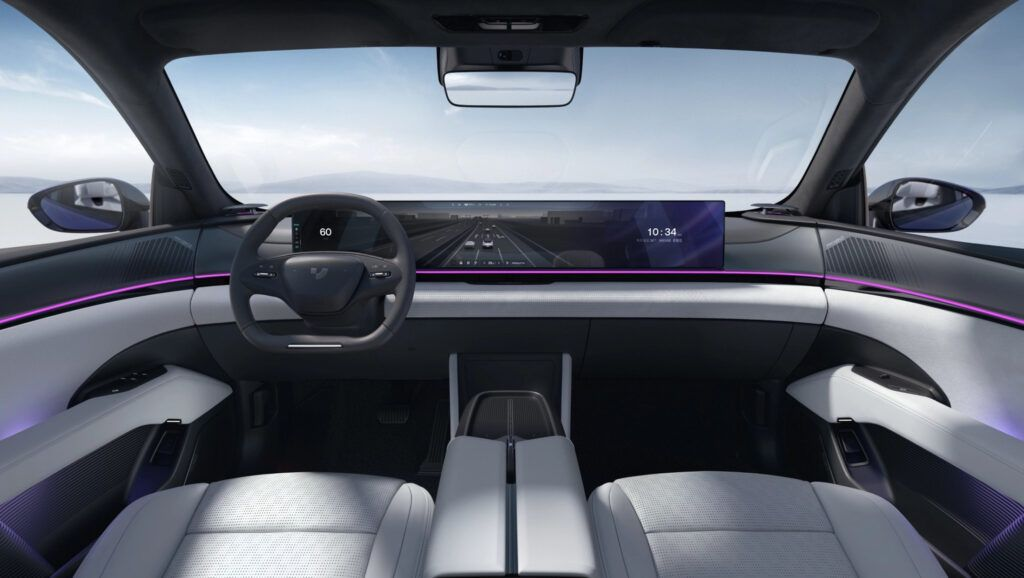
Jiyue 01 full-width display
We design the HMI experiences of the future
For HMI design that drives innovation, choose Digital Creative Asia.
These full-width displays serve as unified information hubs, consolidating driving data, controls, prompts, and settings without the interruption of physical buttons. Models like the SKYHOME, JIYUE 01, and Galaxy E8 leverage this trend to enhance user experience - ensuring easy access to information without diverting attention.
A key feature of full-width screens is adaptability. The Galaxy E8 display dynamically adjusts content based on conditions, using the expanded real estate during autonomous driving for entertainment. Gesture controls also become natural with the panoramic displays, as demonstrated by the SKYHOME's intuitive recognition, allowing touchless interaction.
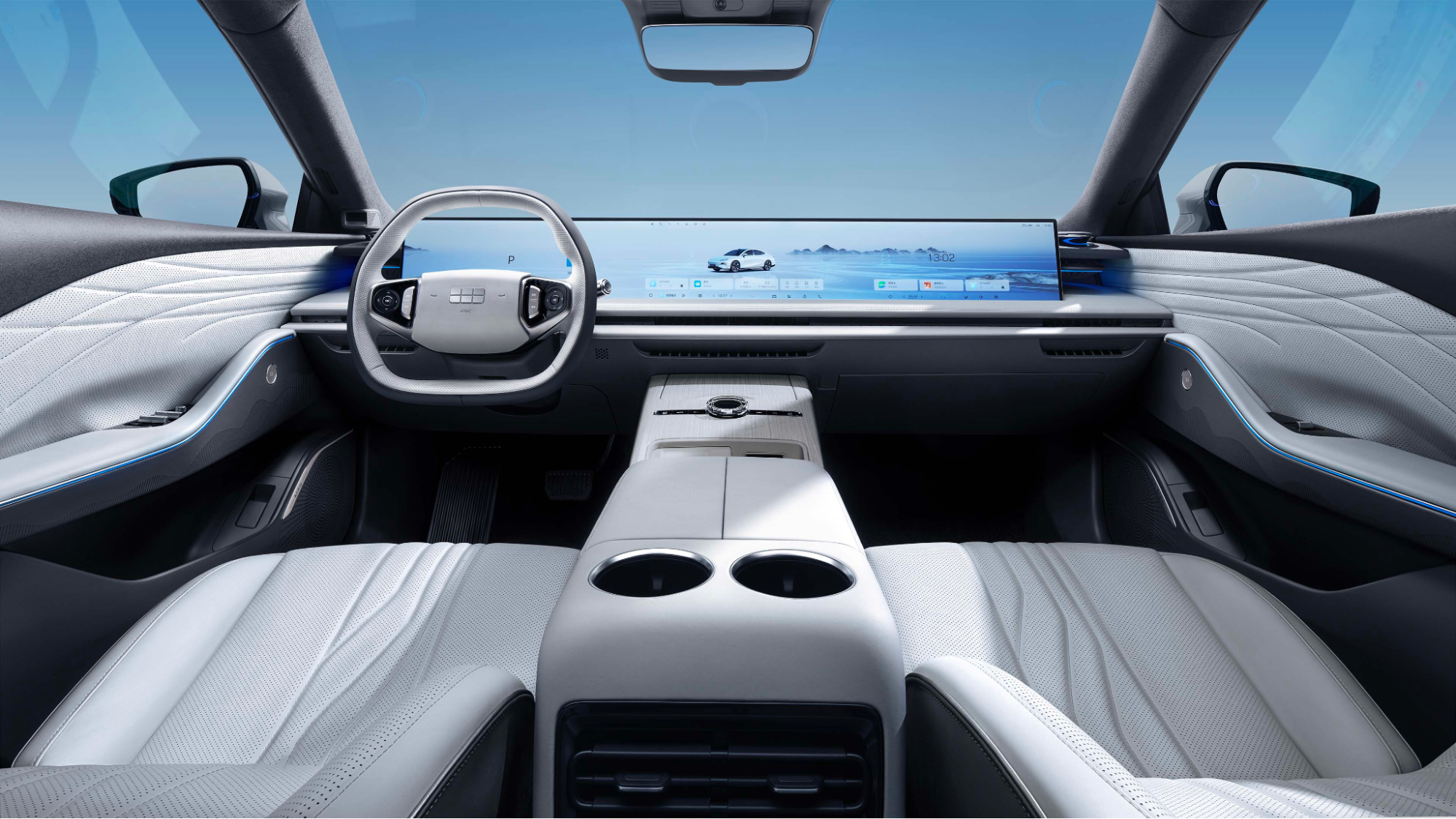
Geely Galaxy E8 full-width screen
Personalization reaches new heights with the customizable layouts and interfaces full-width screens facilitate, like the JIYUE 01's ability to reflect individual preferences. Full integration with smartphones and apps transforms these displays into connected digital cockpits for the modern tech driver, as envisioned by the Galaxy E8.
Navigation that understands personal routes, gaming on the go, customizable exterior lights - China sets the pace on user-needs-first interface transformation. Their breakthroughs in prediction, customization, and multi-modal interaction make vehicles responsive partners, not just driving appliances. It’s time for global automakers to catch up.
Have a project in mind?
Join our newsletter!
Get valuable insights on the latest digital trends, strategies, and developments in China and globally delivered straight to your inbox.
